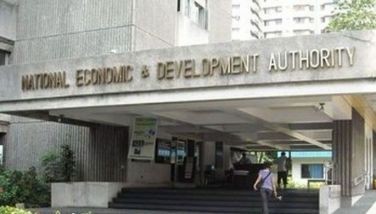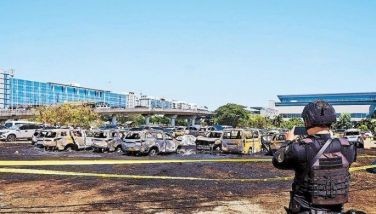Experts discuss lessons from Pinatubo eruption
MANILA, Philippines - Twenty-five years after the second largest volcanic eruption of the 20th century, experts, analysts and government officials gathered for a lecture on the preparation and monitoring prior to the eruption of Mount Pinatubo, its lasting impact and lessons learned from the experience.
Private sector representatives and members of the academe also attended the public lecture at the Carnegie Institution for Science on “25 years ago at Pinatubo: the forecast, climax and aftermath of a giant eruption” by Chris Newhall and Renato Solidum.
Newhall, a career volcanologist from the United States Geological Survey, described the setting prior to the eruption in which a team of volcanologists from the USGS and Philippine Institute of Volcanology and Seismology (Phivolcs) made pre-eruption preparations that included safety studies, hazard map estimates, alert level reminders and unrest trend monitoring.
Ambassador to Washington Jose Cuisia Jr. emphasized in his remarks the importance of such collaboration in saving hundreds of lives and property from destruction.
“Thankfully, prior to the eruption, the collaboration between Phivolcs and USGS resulted in intensive studies of the volcano’s past eruption history, timely forecasts and accurate predictions, thus prompting the evacuation of 75,000 people living in the lowlands around Mount Pinatubo and of the 15,000 American servicemen and their dependents from Clark Airbase before the June 15 eruption,” he said.
The Mount Pinatubo eruption was considered the largest eruption to affect a densely populated area in the 20th century.
Solidum, Phivolcs director, emphasized how the eruption’s pyroclastic flows, secondary explosions and widespread and extensive ash/tephra fall caused not only the loss of lives but also a great loss of livelihood for affected communities.
The loss of arable and habitable land, collapse of bridges, destruction of roads, flooding and isolation of communities and burial of settlement and agricultural areas were some of the major challenges that the government and communities had to face in rebuilding their lives after the disaster.
He also reiterated the importance of local and national government collaboration, availability of modern scientific information, use of documentaries and community-based information campaigns and continued monitoring of post eruption processes as the important lessons learned from the Pinatubo experience.
Cuisia emphasized the need to collaborate in studying natural hazards and that information sharing would reduce disaster risks.
“Twenty-five years later, local communities have rebuilt their lives from the very lahar that took away what they had,” he said of how Filipinos showed resilience and pagkakapit-bisig in pursuing rehabilitation and reconstruction programs. Lahar was eventually quarried and sold as construction material. It is also used as material for handicrafts or souvenirs.
The Philippine embassy set up a booth at the lobby of the Carnegie Institution for Science during the lecture to showcase the sample products derived from Mount Pinatubo ashes.
Mount Pinatubo is now also a popular eco-tourism destination for climbing, hiking and kayaking.
- Latest
- Trending






























